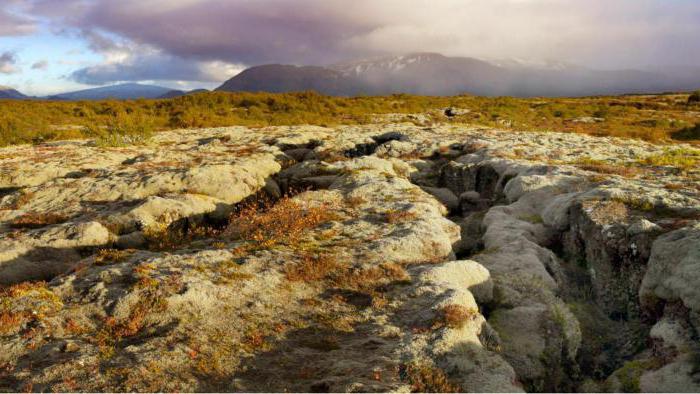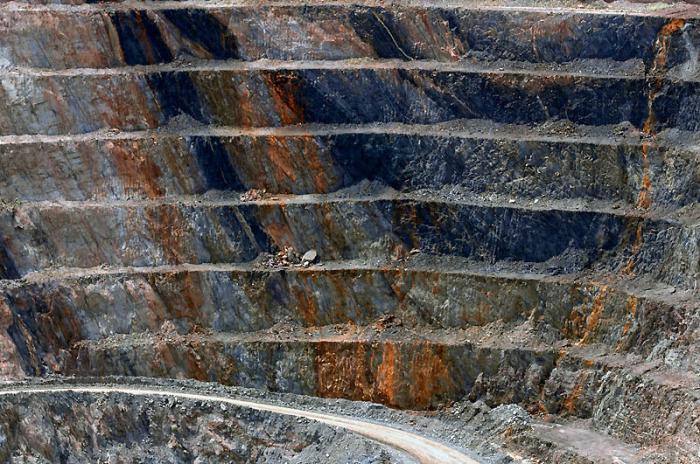What does the earth's crust consist of? Elements of the Earth's Crust
The Earth's crust is a solid surface layer of ourplanet. It was formed billions of years ago and constantly changes its appearance under the influence of external and internal forces. Part of it is hidden under water, the other forms the land. The Earth's crust consists of various chemicals. Let's find out from which.
The surface of the planet
Hundreds of millions of years after the onsetEarth, its outer layer of boiling molten rocks began to cool and formed the earth's crust. Year by year the surface changed. Cracks, mountains, volcanoes appeared on it. The wind smoothed them so that in a while they appeared again, but already in other places.

Due to external and internal processes, the outer solid layer of the planet is heterogeneous. From the point of view of structure, it is possible to distinguish such elements of the earth's crust:
- geosyncline or folded areas;
- platform;
- edge faults and deflections.
Platforms are extensiveinactive parts. Their upper layer (to a depth of 3-4 km) covers the sedimentary rocks, which lie horizontally. The lower level (foundation) is strongly crumpled. It is composed of metamorphic rocks and may contain magmatic inclusions.
Geosynclines are tectonically activesites where there are processes of mountain building. They arise at the junction of the ocean floor and the continental platform, or in the deflection of the ocean floor between the continents.
If the mountains are formed close to the boundary of the platform,edge faults and deflections may occur. They reach up to 17 kilometers in depth and stretch along the mountain formation. Over time sedimentary rocks accumulate here and deposits of minerals (oil, stone and potassium salts, etc.) are formed.
Composition of bark
The crust mass is 2.8 · 1019 tons. This is only 0.473% of the total mass of the planet. The content of substances in it is not as varied as in the mantle. It is formed by basalts, granites and sedimentary rocks.
At 99.8% of the Earth's crust consists of eighteenelements. The rest accounts for only 0.2%. The most common are oxygen and silicon, which constitute the bulk of the mass. In addition, the bark is rich in aluminum, iron, potassium, calcium, sodium, carbon, hydrogen, phosphorus, chlorine, nitrogen, fluorine, etc. The content of these substances is shown in the table:
Item name | symbol | % of mass |
Oxygen | O | 49,13 |
Silicon | Si | 26,0 |
Aluminum | Al | 7,45 |
Iron | Fe | 4,2 |
Calcium | Ca | 3,25 |
Sodium | Na | 2,4 |
Potassium | K | 2,35 |
Magnesium | Mg | 2,35 |
Hydrogen | H | 1 |
Titanium | Ti | 0,61 |
Carbon | C | 0,35 |
Chlorine | Cl | 0,2 |
Phosphorus | P | 0,125 |
Sulfur | S | 0,1 |
Manganese | Mn | 0,1 |
Fluorine | F | 0,08 |
Barium | Ba | 0,05 |
Nitrogen | N | 0,04 |
The rarest element is astat - an extremely unstable and poisonous substance. To rare are also tellurium, indium, thallium. Often they are scattered and do not contain large clusters in one place.
Continental cortex
The continental or continental crust is what we usually call land. It is quite old and covers about 40% of the entire planet. Many of its sites reach the age from 2 to 4.4 billion years.
The continental crust consists of three layers. Above it covers an intermittent sedimentary cover. The rocks in it lie in layers or layers, because they are formed due to compressing and compacting the sediments of salts or microorganism residues.
The lower and more ancient layer is represented by granites and gneisses. They are not always hidden under sedimentary rocks. In some places they come to the surface in the form of crystal shields.

The lowest layer consists of metamorphic rocks like basalts and granulites. Basalt layer can reach 20-35 kilometers.
Oceanic crust
Part of the earth's crust, hidden beneath the waters of the Worldocean, is called oceanic. It is thinner and younger than the continental one. By age, the crust does not reach two hundred million years, and its thickness is about 7 kilometers.

The continental earth's crust consists of sedimentaryrocks from deep-sea remnants. Below is a basalt layer 5-6 kilometers thick. Under it begins the mantle, represented here mainly by peridotites and dunites.
Every hundred million years the bark is renewed. It is absorbed in the subduction zones and is formed again in the mid-oceanic ridges, with the help of outgoing minerals.






